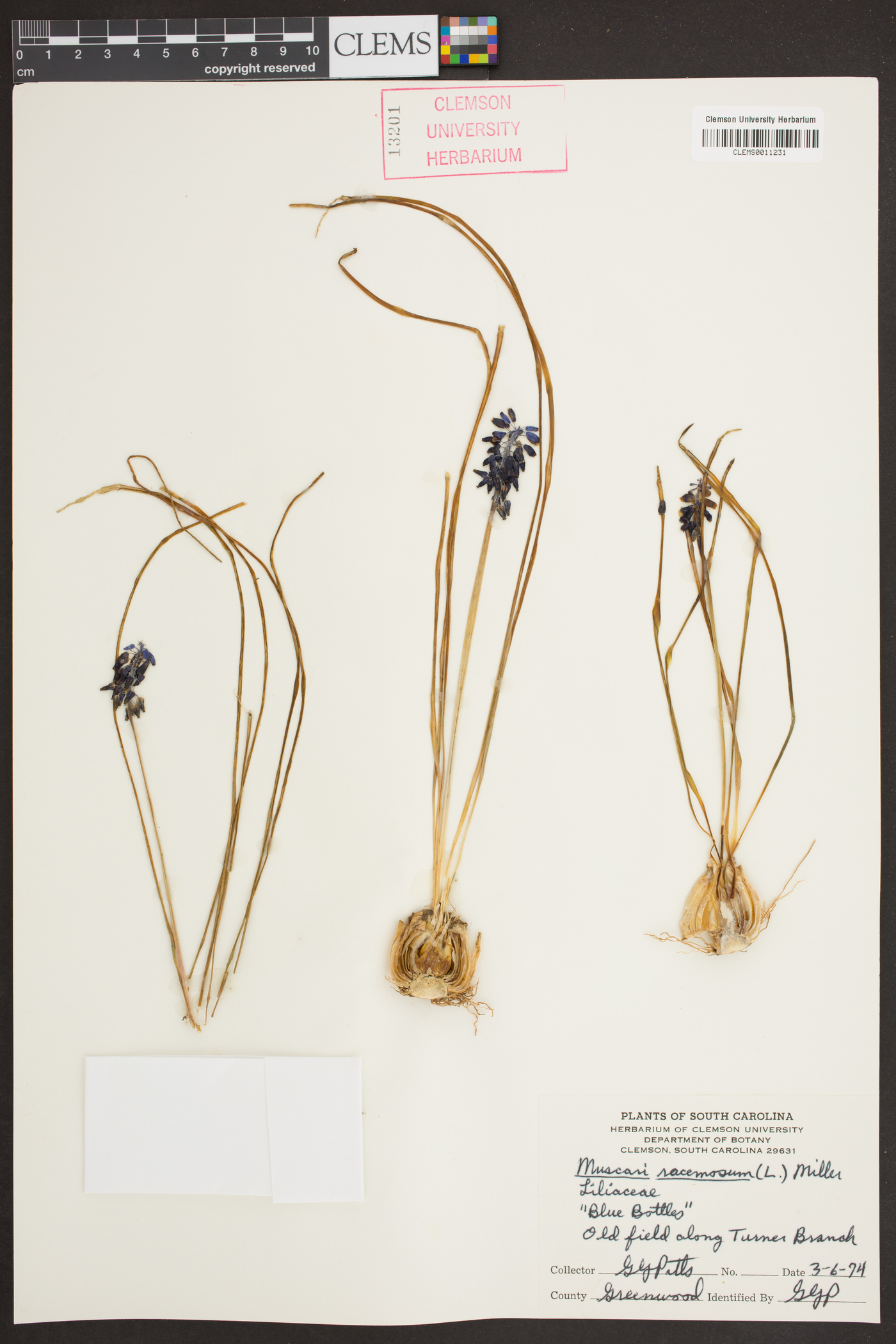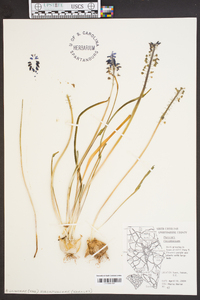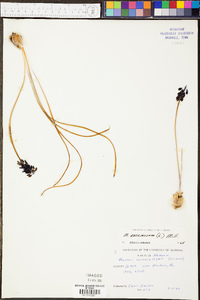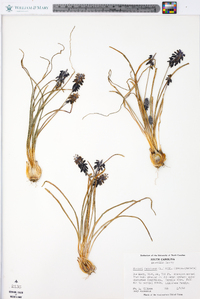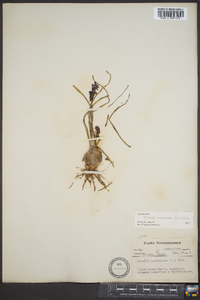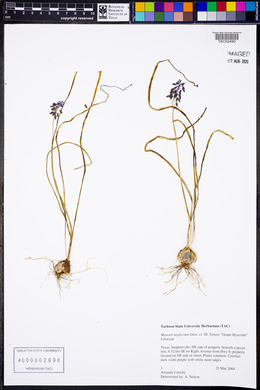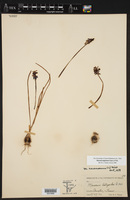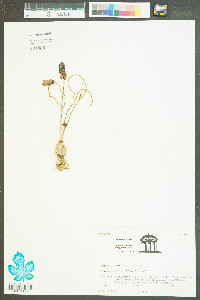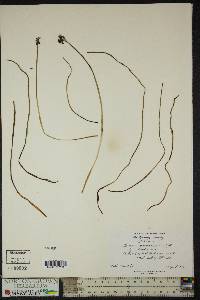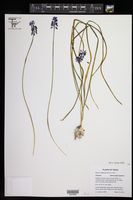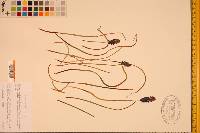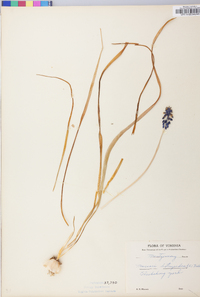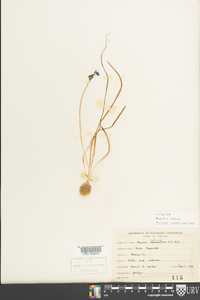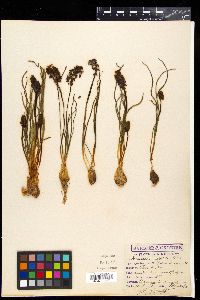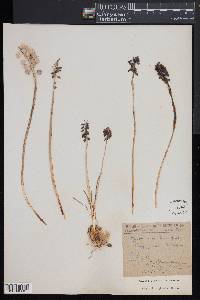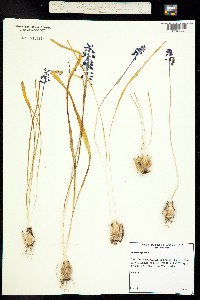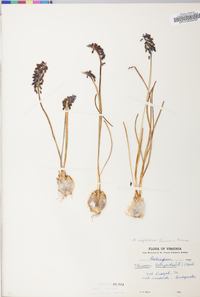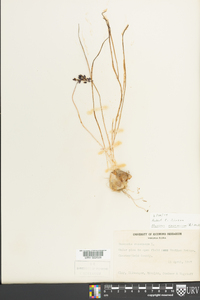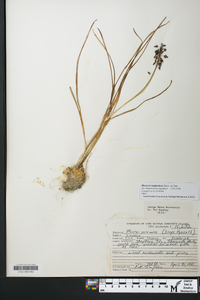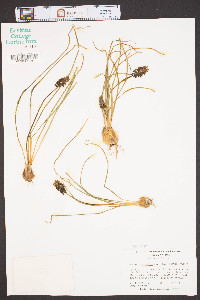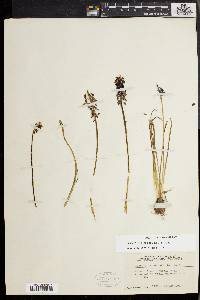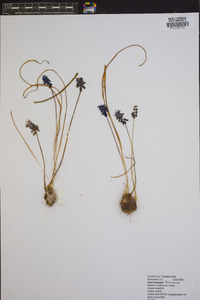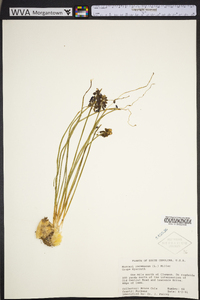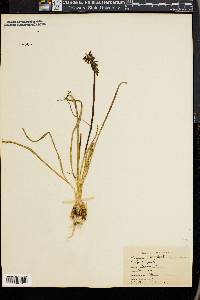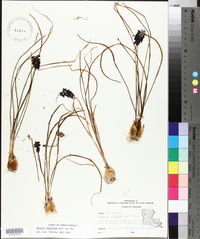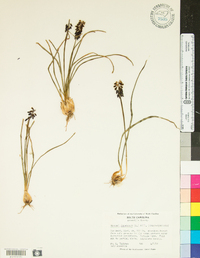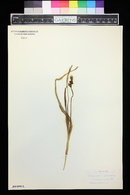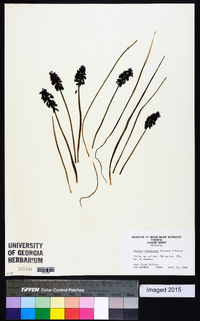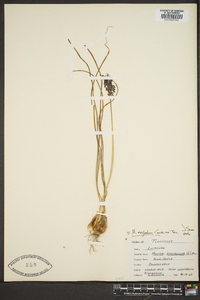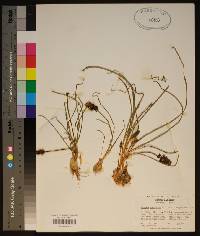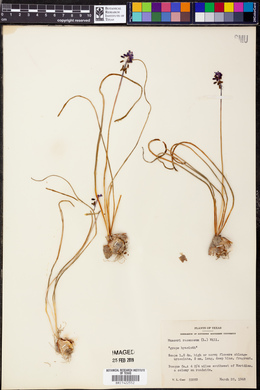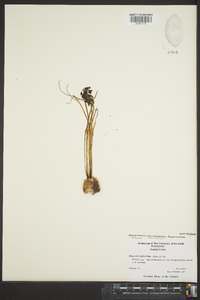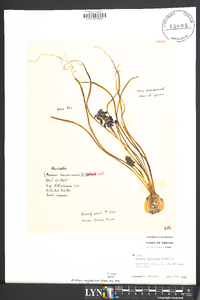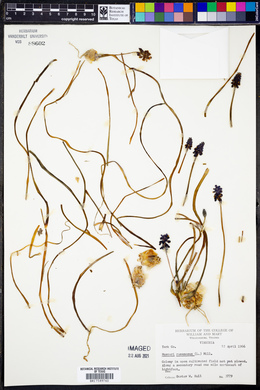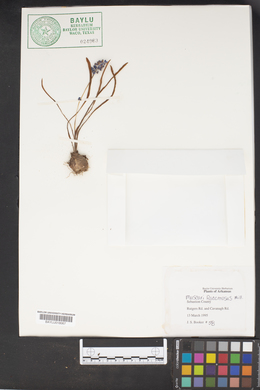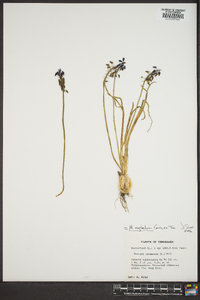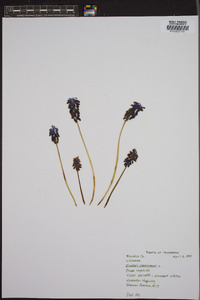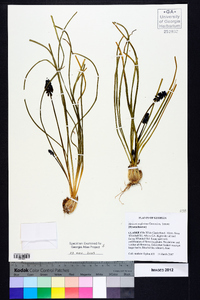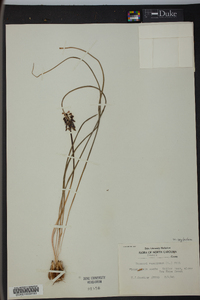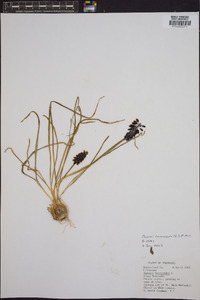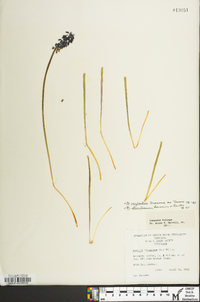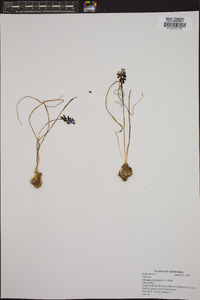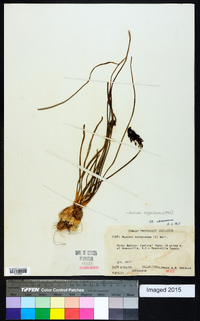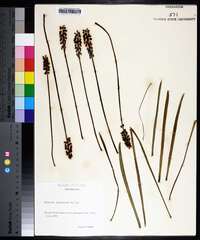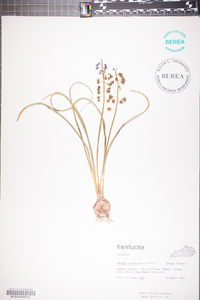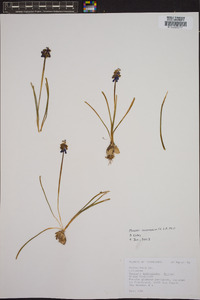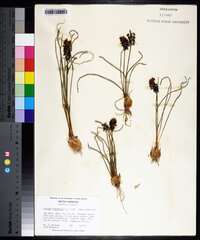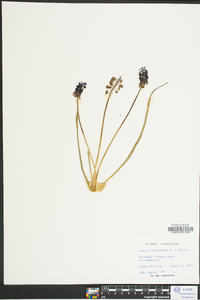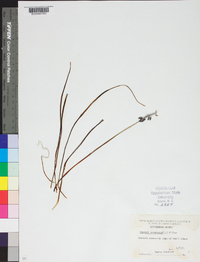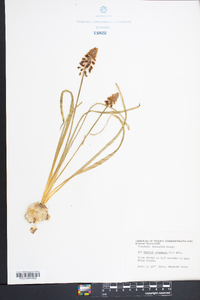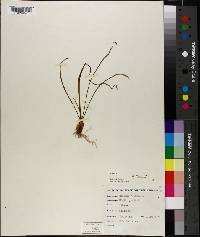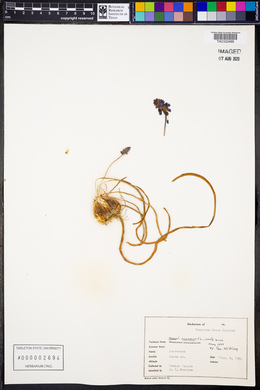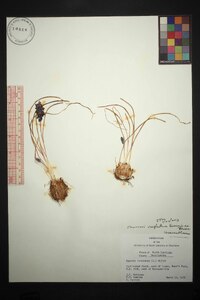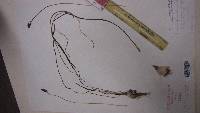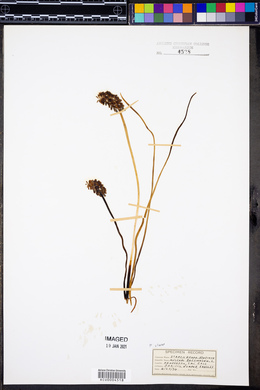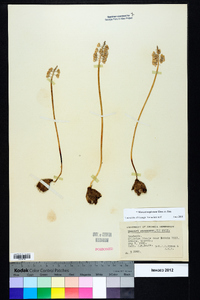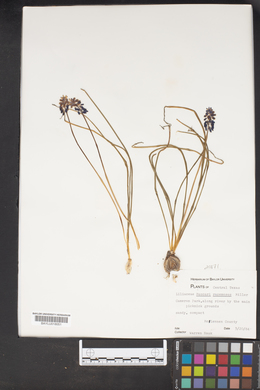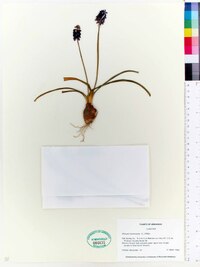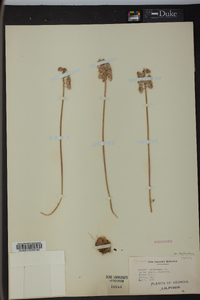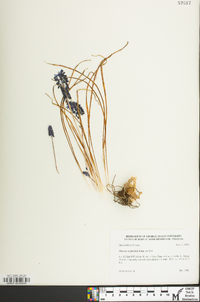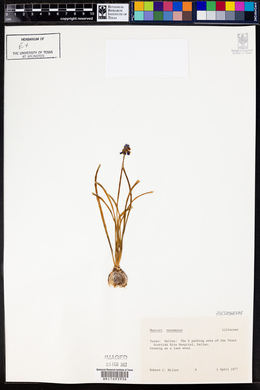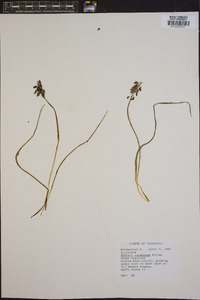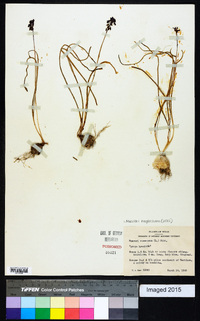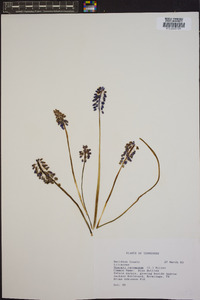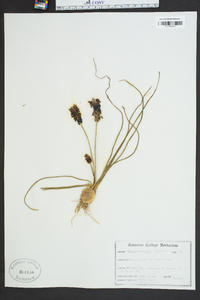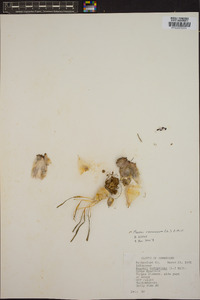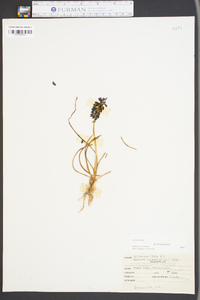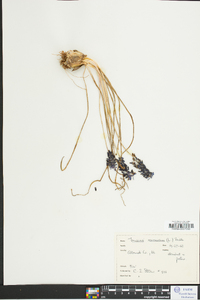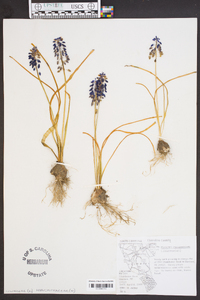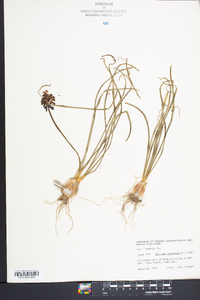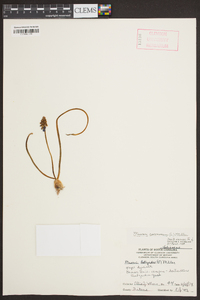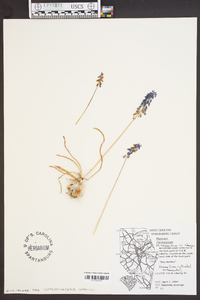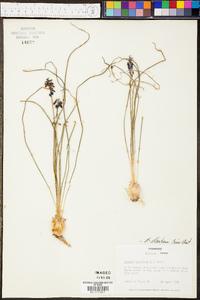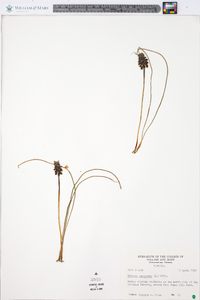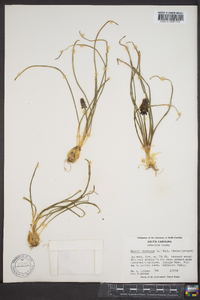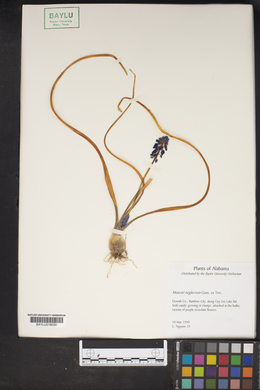Muscari neglectum
|
|
|
|
Family: Asparagaceae
Starch Grape-Hyacinth, more...Starch Grape Hyacinth
[Muscari ammophilum Sennen, moreMuscari atlanticum Boiss. & Reut., Muscari racemosum (L.) Mill.] |
Plants to 20(-30) cm. Bulbs ovoid, 2-3 × 2-2.5 cm, offsets usually present, tunics dark brown. Leaves 3-6; blade channeled to subterete, narrowly linear, (10-)15-30(-40) cm × 2-5(-8) mm, apex abruptly contracted. Scape 8-25(-30) cm, usually ± equaling leaves. Racemes 20-40-flowered. Flowers: perianth tube blackish blue, obovoid to oblong-urceolate or cylindric, 4-6 × 2-3 mm, teeth white; fertile and sterile flowers ± equal (sterile may be slightly smaller and paler); pedicel declined or nodding, 3-5 mm. Capsules 5-7(-10) × 5-7(-10) mm. 2n = 18, 36, 45, 54, 72. Flowering early--mid spring. Roadsides, fields, woods, abandoned gardens; 0--1500 m; introduced; Ala., Ark., Conn., Del., D.C., Ga., Ill., Ind., La., Md., Mass., Mich., Miss., N.Mex., N.Y., N.C., Ohio, Pa., S.C., Tenn., Tex., Va., W.Va.; s Europe; n Africa; sw Asia; expected elsewhere. W. T. Stearn (1990) typified Hyacinthus racemosus and discussed the taxonomically different applications of that name and Muscari racemosum. The latter binomial, misattributed to (Linnaeus) Miller, sometimes has been used for what is correctly called M. neglectum.
Perennial herb with a bulb to 30 cm tall Leaves: basal, three to six, 15 - 30 cm long, 1 - 3 mm wide, narrowly linear with a recurved tip, almost cylindrical, channeled along one side. Inflorescence: a terminal, dense cluster (raceme) of twenty to forty flowers on an upright stem. Flowers: nodding, blackish blue, 4 - 6 mm long, 2 - 3 mm wide, egg-shaped to oblong- urn-shaped to cylindrical, with six small, white teeth. Stamens six. Anthers dark blue. Fruit: a three-angled capsule, 5 - 7 mm long, 5 - 7 mm wide. Seeds six. Similar species: The similar Muscari botryoides differs mainly by the shape and width of its leaves, which are flat and mostly over 3 mm wide. Flowering: late April to early May Habitat and ecology: Introduced from Europe. A rare escape from cultivation, usually as a lawn weed. Occurence in the Chicago region: non-native Etymology: Muscari comes from the Greek word moschus, which means musk. Neglectum means overlooked. Author: The Morton Arboretum Lvs narrowly linear, nearly terete, channeled along one side, 1-3 mm wide, soon recurved at the tip; scale 1-3 dm; raceme 3-5 cm at anthesis, longer in fr; fls blue, most of them fertile, declined or nodding, exceeding their slender pedicels; uppermost few fls sterile, erect or ascending, somewhat smaller, on similarly short pedicels; perianth obovoid to oblong- urceolate; 2n=18-72. Native of Europe, now a weed in fields and waste places in Gleason, Henry A. & Cronquist, Arthur J. 1991. Manual of vascular plants of northeastern United States and adjacent Canada. lxxv + 910 pp. ©The New York Botanical Garden. All rights reserved. Used by permission. From Flora of Indiana (1940) by Charles C. Deam There are only two reports of this as an escape although it may also be wider in distribution than our reports indicate. Nieuwland (Amer. Midland Nat. 3: 107. 1913) says: "Very well established in a sandy field northwest of St. Mary's, Notre Dame, and spreading along a road very fast." In 1910 I found it frequent to common all over a 10-acre clover field on the Aaron Wolfe farm about 7 miles northwest of Corydon. …… Indiana Coefficient of Conservatism: C = null, non-native Wetland Indicator Status: N/A |

